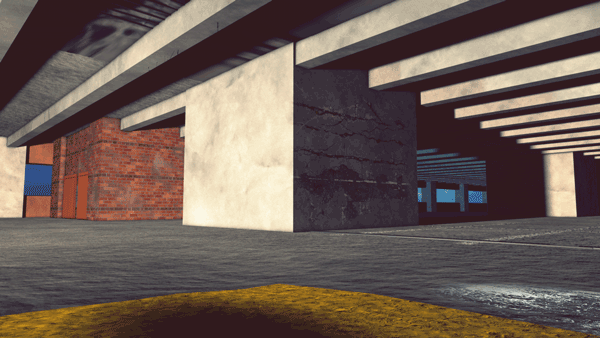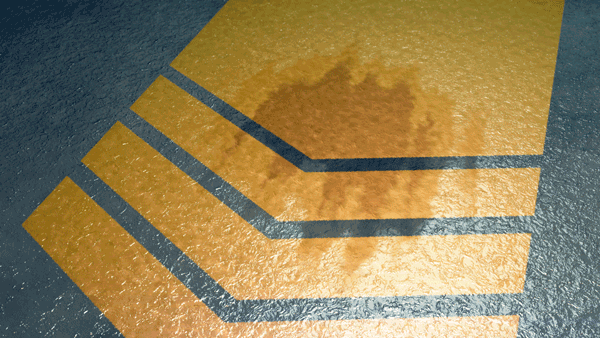Building and facility managers are often tasked with maintenance of parking structures. Made of concrete and steel, these multi-level hubs provide visitors and their vehicles with shelter from the elements and often provide access to housing or office space. However, protecting the structure itself from the constant onslaught of environmental stressors and wear and tear comes with its own set of challenges.
Vehicles regularly entering parking garages leave water, oil, and other muck behind, not to mention salt and de-icers tracked in during the winter months that can corrode the structure’s concrete and steel support system.
In the winter, freeze and thaw cycles can cause big problems for concrete structures. When water infiltrates concrete, it can freeze, causing the water to occupy 9 percent more volume than in its liquid state. This expansion causes distress on the concrete, which can lead to fractures that will continue to grow exponentially as saturation of the material increases.
An ineffective maintenance routine on a parking structure can quickly lead to repairs and restorations that are disruptive to tenants and create unexpected costs and safety concerns for the owner.
While a facility manager may notice some areas of damage, he or she may not fully understand the gravity of the deterioration and the importance of a routine maintenance schedule that can also help delay or avoid costly restoration, decrease liabilities, retain ideal parking volume and rates, adhere to local permitting guidelines, and maintain the property’s value.
An experienced concrete maintenance and restoration specialist is best qualified to identify specific problem areas and hazards within the garage and to recommend a repair plan and maintenance schedule to the facility manager. You’re the expert. Here are some tips on how to share that expertise with your facility owner clients.
Problem Indicators
All types of parking structures — double-tee precast, conventional, and post-tensioned — are subject to deterioration. Essentially, the goal of parking garage maintenance is to keep water and corrosives away from the garage’s reinforcing steel. The damaging and compounding cycle of water infiltration never gets better on its own, and the longer warning signs are ignored, the more serious and costly the repairs may become.

There are five key indicators that a parking structure is in need of preventative maintenance. This simple check-list can be shared with a facility manager when surveying a parking garage for damage and making a recommendation for routine maintenance:
- Water Leakage: Leaking water is a clear sign that a parking garage is in need of repairs. The longer the condition is left unattended, the more expensive the consequences can become. Three indicators that water leakage is occurring are: exposed metals rusting, rust stains along the walls, and efflorescence.
- Ponding Water: Water and parking garages do not mix well, so standing water is obviously an issue. A simple drain installation or protective waterproof membrane may prevent future, larger problems.
- Expansion Joint Failure: Failed expansion joints provide another avenue for water to penetrate and reach the reinforcing steel and T-to-T connector plates. Repairing expansion joints is much simpler than resolving issues created by corroded reinforcing steel and connector plates. Detecting expansion joint problems and reacting quickly to make repairs should be beneficial in the long run. Wear at the T-to-T joints, expansion joint failure, and flange connection deterioration are commonly found in double-tee precast structures.
- Delaminated, Spalled, Horizontally Cracked, and Vertically Cracked Concrete: Concrete is bound to crack at some locations. Delaminated or spalled concrete is when a piece of concrete detaches from the structure. Along with delaminating and spalling, vertical and horizontal cracks in the concrete also represent threatening areas of weakness. These issues are problematic as they can lead to structural damage because they allow water to reach the garage’s reinforcing steel. This type of damage is commonly seen on post-tensioned and conventional cast-in-place concrete parking garages.
- Exposed Rebar (Reinforcing Steel): If rebar can be seen, there is a problem that warrants swift attention. When rebar is introduced to water, it corrodes and expands up to eight times its original size. This condition usually is the result of a crack in the concrete that allows water to travel through it and reach the rebar. The force of the expanding rebar causes more damage to the concrete around it, which creates greater access for water and more corrosion. It is imperative to stop this compounding cycle as soon as possible.
Site-Specific Solutions
Recent strides in technology have provided new and effective ways to extend the life of parking structures. These advances consist of conventional means, including better coatings and sealants, as well as all new methods of handling challenging concrete repairs.
Waterproofing plays an extremely important role in protecting every aspect of a parking structure’s construction, and it includes the use of caulks and sealants to seal the perimeters of openings as well as coatings applied to driving surfaces and the facade.
Some types of commonly used coatings for parking structures include:
• Elastomeric breathable wall coating systems, which are excellent for waterproofing. These attractive systems are known for their stretchiness that allows some substrate movement and bridging of moving hairline cracks. They are also permeable, which allows moisture vapor to pass through the film without compromising its adhesion to the surface.
• Protective/decorative surface coatings. These are specially formulated to meet demanding environments. These types of coatings can be applied to concrete, masonry block, metal, or wood and are generally applied with a sprayer. These cost-effective coatings offer superior moisture protection and can also provide insulation, ultraviolet (UV) protection, and resistance to color fading, oil, grease, and mildew.
• Clear water repellents, which are ideal for protecting masonry, concrete, brick, block, and stone. Clear water repellents penetrate into treated surfaces and bond with the substrate to provide long-lasting moisture protection. These types of repellents help keep decks cleaner by repelling dirt and protecting against staining.
• Urethane waterproof traffic coatings. These are applied to parking decks and should extend the life of a repair, protect adjacent areas that are currently in good condition, and improve the aesthetics of the area treated. A variety of deck coatings are available to prevent leaks from penetrating to areas below and maintain the surface’s color and keep it looking like new for years. These coatings are ideal for areas that require a durable surface.
Other parking structure restoration services that may be utilized include:
• Concrete repair and replacement
• Structural repairs
• Expansion joint installation/replacement
• Post-tension repair (strand and button-head systems)
• Epoxy injection
• Chemical grout injection
• FRP (Fiber Reinforced Polymer) systems
• Cathodic protection
• Shotcrete (spray-applied concrete)
• Sacrificial galvanic anodes
The solution to your client’s needs will depend on the specific problem that he or she is experiencing.
Finding Problems Early
While parking structures may provide a convenience to drivers, they can often become an inconvenience to facility managers. Using this simple checklist may help you explain to facility managers the importance of routine maintenance and help them prevent smaller problems from growing into larger ones. It can be difficult and costly to catch up once deterioration has set in, so maintenance is key.
About the Author:
Carter Pogue is the sales and project manager for Western Construction Group. He has 15 years of experience in coordinating trades, developing partnerships, and building positive rapport with architects, engineers, owners, construction managers, vendors, and clients while maintaining costs. He is well versed in contract and change order negotiations, multiple project estimating, impending design problems, project deadlines, document preparation, material procurement, project close-out, and site management. Pogue is also an active member in the local Great Plains Chapter of the International Concrete Repair Institute (ICRI). For more information, contact: Western Specialty Contractors, www.westernspecialtycontractors.com
